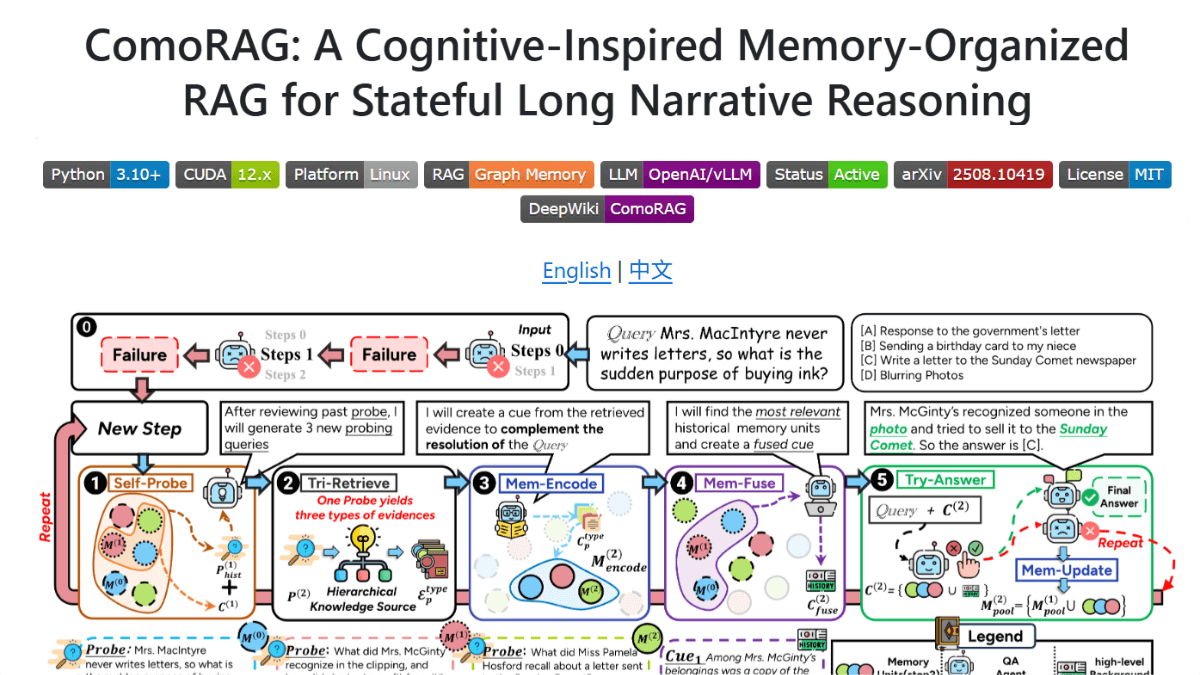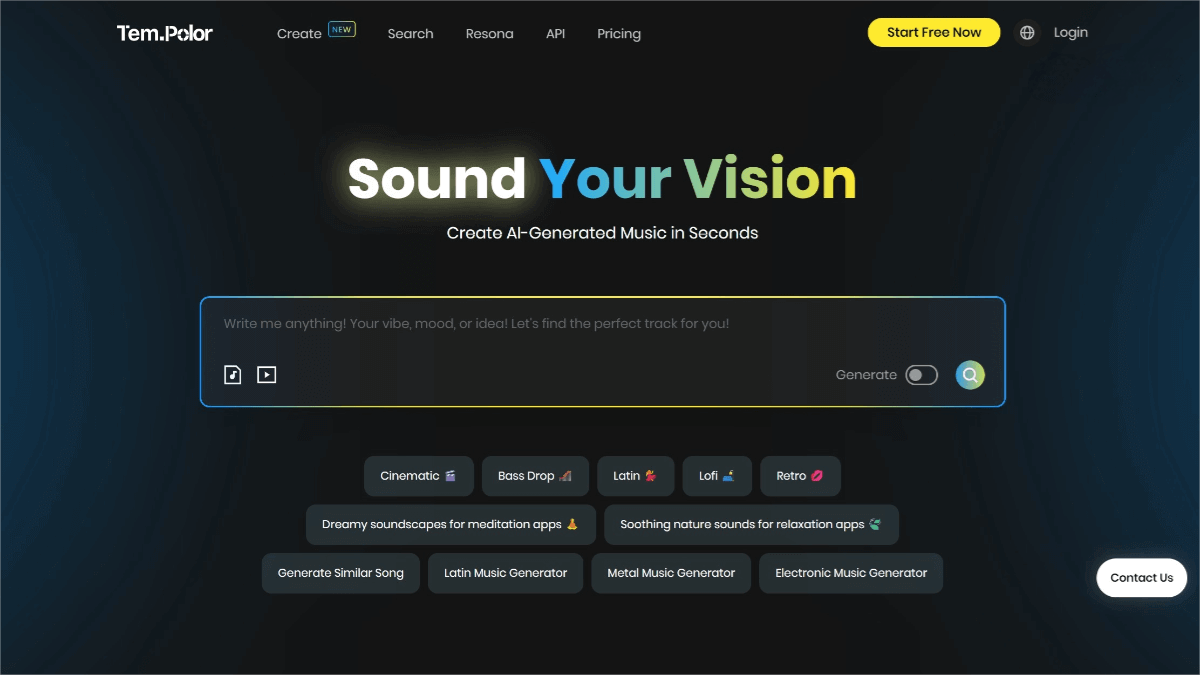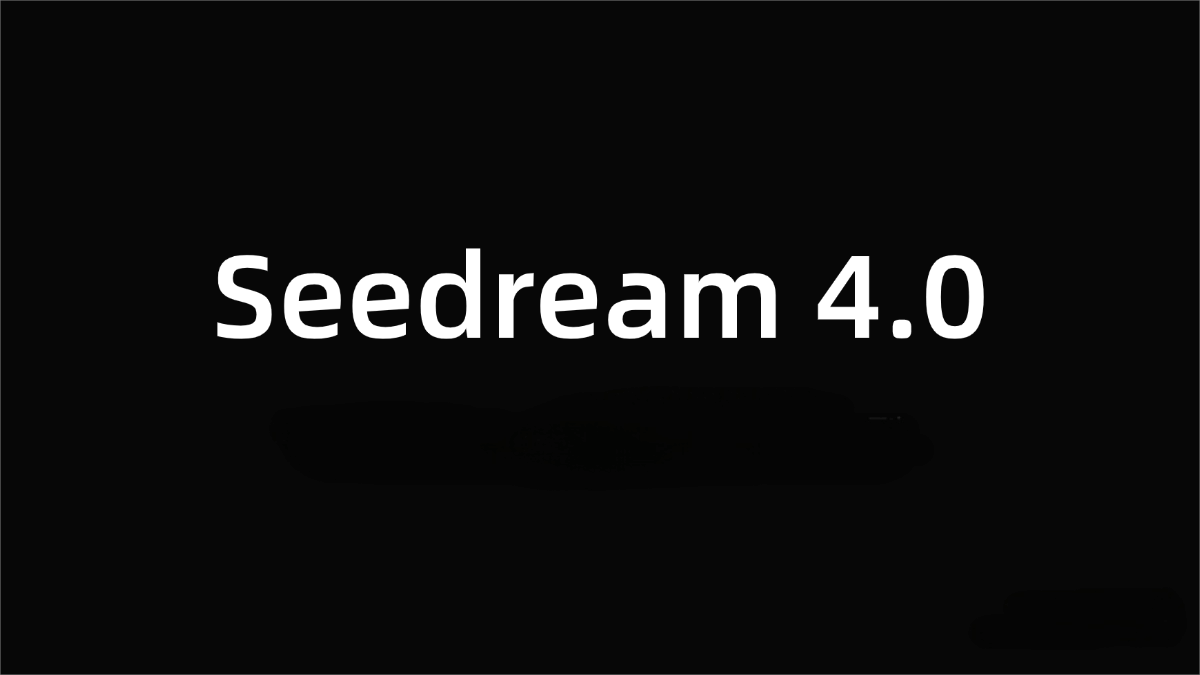ComoRAG – A Cognitively-Inspired RAG Framework Jointly Developed by South China University of Technology and WeChat
What is ComoRAG?
ComoRAG is a cognitively-inspired Retrieval-Augmented Generation (RAG) framework jointly developed by the School of Future Technology at South China University of Technology, the WeChat AI team, and other collaborators. It is specifically designed for understanding and reasoning over long-form narrative texts. ComoRAG simulates the functions of the human prefrontal cortex by leveraging a dynamic memory workspace and iterative reasoning cycles. It integrates fragmented evidence into coherent context, enabling stateful long-form narrative reasoning. On multiple long-text narrative benchmarks, ComoRAG significantly outperforms traditional RAG methods, excelling in complex queries that require global understanding.

Key Features of ComoRAG
-
Long-Form Narrative Understanding: Capable of processing complex plots and character relationships to solve problems requiring global comprehension.
-
Dynamic Memory & Iterative Reasoning: Gradually builds and updates understanding of the narrative, forming coherent context over time.
-
Multi-Layer Knowledge Indexing: Constructs fact, semantic, and episodic layers to support reasoning from detailed facts to abstract concepts.
-
Efficient Retrieval & Generation: Uses retrieved evidence to assist in generating answers, greatly improving efficiency and accuracy for long text processing.
Technical Principles of ComoRAG
-
Dynamic Memory Workspace: At its core, ComoRAG uses a dynamic memory workspace to store and update memory units during reasoning. Each unit contains a probing question, retrieved evidence, and clues on how the evidence contributes to solving the original problem.
-
Iterative Reasoning Cycle: When reasoning reaches a bottleneck, ComoRAG automatically initiates iterative cycles:
-
Self-Probe: Generates new probing questions to explore additional information paths.
-
Tri-Retrieve: Retrieves relevant evidence from the multi-layer knowledge index.
-
Mem-Encode: Encodes retrieved evidence into new memory units.
-
Mem-Fuse: Integrates new memory units with prior ones to form more comprehensive clues.
-
Try-Answer: Attempts to answer the original question using updated evidence. If unsuccessful, the process continues into the next cycle.
-
-
Multi-Layer Knowledge Index:
-
Veridical Layer: Built from original text fragments to ensure reasoning remains fact-based.
-
Semantic Layer: Captures themes and conceptual structures through semantic clustering and summarization.
-
Episodic Layer: Reconstructs narrative flow and plot development using sliding-window summarization.
-
-
Cognitive Regulation Mechanism: Mimics the cognitive control of the human prefrontal cortex, continuously evaluating and revising narrative understanding through dynamic memory and iterative reasoning to achieve true stateful reasoning.
Project Resources
-
GitHub Repository: https://github.com/EternityJune25/ComoRAG
-
arXiv Technical Paper: https://arxiv.org/pdf/2508.10419
Application Scenarios of ComoRAG
-
Literary Analysis: Helps researchers and students deeply understand complex plots and character relationships in literature, answering advanced narrative questions (e.g., analyzing Snape’s motivations in Harry Potter).
-
Screenplay Optimization: Assists film and television teams in refining script plots, ensuring coherence and logical consistency throughout the storyline.
-
Educational Tools: Enhances students’ reading comprehension and critical thinking by supporting deeper analysis of long-form reading materials.
-
Intelligent Q&A Systems: Builds advanced Q&A platforms capable of handling complex narrative questions and providing accurate, coherent answers.
-
Content Creation Assistance: Supports novelists, screenwriters, and other creators with plot structuring and optimization suggestions, ensuring narrative coherence and engagement.
Related Posts




